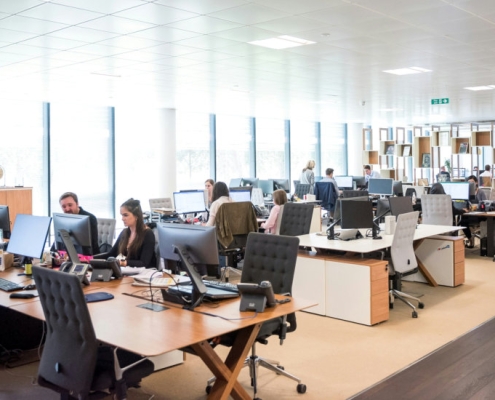Relocating your office can be exciting—a chance to upgrade your space and optimise operations. But without proper planning, costs can spiral out of control, leaving you with unexpected expenses and financial stress. The good news? With a solid budget and strategic planning, you can manage your office move without breaking the bank.
In this guide, we’ll break down the key components of creating an office move budget, uncover common pitfalls, and provide practical tips to stay on track financially.
Why a Budget Is Critical for Office Moves
An office move involves many moving parts—literally and figuratively! Expenses can range from design, construction, furniture, fixtures and fittings, to logistics and IT setup and employee downtime. Without a well-thought-out budget, it’s easy to overlook hidden costs or underestimate major expenses.
Benefits of a Detailed Budget:
- Cost Control: Prevent overspending by allocating resources wisely.
- Transparency: Ensure all stakeholders are aware of costs and expectations.
- Stress Reduction: Minimise financial surprises and keep your team focused on the transition.
Steps to Budget for an Office Move
1. Assess Your Current and Future Needs
Before you start planning the move, conduct a comprehensive assessment of your current space and what your new office will require.
- Identify what assets can be reused and what sustainable strategy will be used for the disposal of the rest – donation, recycle?
- Will new technology be required – meeting rooms, AV, laptops, telephony
- Plan for future needs, like additional workstations or increased built space like meeting rooms or storage areas
Tip: Ask your team what they think the new office needs
2. Break Down the Costs
Here’s a breakdown of typical office move expenses to include in your budget:
- Pre-Move Expenses:
- Storage audits
- Employee inputs, workshops etc
- Consultants
- Planning and project management
- Transportation and Logistics
- Packing moving and unpacking
- Temporary storage if required
- Sustainable recycling and disposal of assets
- Planning and project management
- Technology and IT Setup:
- Relocation of servers and equipment, telephony systems or cost of new
- AV equipment & smart building integrations
- Transmission or connectivity links
- New software licences or integrations
- New Space Setup:
- Design development and workspace strategy, floor plans and layouts
- Furniture, fixtures and fittings
- Utility setup (electricity, internet, etc.)
- Construction/fit out
- Employee-Related Costs:
- Travel allowances or relocation reimbursements/support
- Temporary workspaces for business continuity
- Post-Move Expenses:
- Week 1 welcome program
- Cleaning services for the old and new office
- Address updates and marketing material changes
- Make good and cleaning fees for old building
3. Build a Contingency Fund
No matter how thorough your budget is, surprises can happen. Allocate 10–20% of your total budget as a contingency fund for unexpected expenses like last-minute repairs or delays.
4. Compare Costs with Vendors
Shop around and get multiple quotes for services like movers, contractors, and IT professionals. Ask about hidden fees to avoid surprises later.
5. Plan for Downtime Costs
Lost productivity can be a major expense during a move. If employees can’t work due to the transition, this can directly impact your revenue.
Tips to Reduce Downtime:
- Schedule the move during weekends or holidays.
- Set up remote work arrangements during the transition.
- Partner with a professional moving company to expedite the process.
6. Track and Adjust Your Budget in Real Time
During the move, track your spending against the initial budget. Ask your consultants how they intend to stay organised and negate unexpected costs as needed.
Practical Tips to Cut Costs During an Office Move
- Declutter Before You Move: Sell, donate, or recycle furniture and equipment you no longer need.
- Opt for Reusable Packing Materials: Save money and reduce waste by using crates instead of cardboard boxes.
- Negotiate with Vendors: Ask for discounts or bundled services when dealing with moving companies and contractors.
- Plan Early: Last-minute bookings often come with a premium price tag.
Avoid Common Budgeting Mistakes
- Underestimating Hidden Costs: Failing to account for compliance fees, technology setup, or cleaning costs can derail your budget.
- Skipping a Contingency Fund: Always plan for the unexpected to avoid financial strain.
- Not Communicating Clearly: Ensure all team members and vendors are aligned on the budget and scope of work.
Final Thoughts
Planning and budgeting for an office move doesn’t have to be overwhelming. By assessing your needs, breaking down costs, and preparing for unexpected expenses, you can ensure a smooth transition without overspending.
Ready to tackle your office move? Start early, stay organised, and work with trusted vendors to keep your budget intact. With the right planning, your move can be a stepping stone to greater success—not a financial burden!





